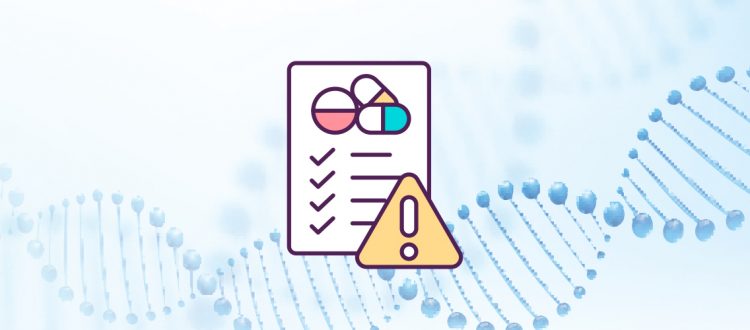Unraveling Drug-Drug and Gene-Drug Relationships: Enzyme Inhibition, Genetics, and Adverse Drug Events
I’ve previously written a lot about pharmacogenomics, and how it’s shaping the future of medicine by tailoring drug prescriptions to an individual’s genetic makeup. Today, let’s dive deeper into the world of drug metabolism and explore how drug-drug interaction data can give us insights into potential gene-drug interactions. For example, understanding the effects of medications that act as inhibitors can help us comprehend how poor metabolizers may potentially experience adverse drug events, even without taking a second drug that acts as an inhibitor. In this article, I’ll use CYP3A4 as an example, but this same concept can also be applied to other cytochrome p450 genes.
CYP3A4 is part of the cytochrome P450 enzyme family, predominantly found in the liver and intestines, and is involved in breaking down roughly 50% of the drugs we use, making it easier for our bodies to excrete them. Imagine taking a drug that is a CYP3A4 inhibitor alongside a second drug that requires CYP3A4 for its metabolism. The inhibitor blocks CYP3A4’s activity, slowing down the metabolism of the second drug. Consequently, higher levels of the second drug accumulate in the bloodstream, raising the risk of side effects and adverse drug events.
Some individuals possess genetic variations in the CYP3A4 gene, which can lead to altered drug metabolism. These poor metabolizers experience reduced CYP3A4 activity due to their genetic makeup, making them more susceptible to adverse drug events when taking CYP3A4-metabolized medications – even without a second drug acting as a CYP3A4 inhibitor.
By studying the effects of CYP3A4 inhibitors on drug metabolism, we can better understand the risks faced by poor metabolizers. In both cases, reduced CYP3A4 activity leads to slower drug metabolism and higher drug concentrations in the body. This means that poor metabolizers may face similar adverse drug events as individuals taking a CYP3A4 inhibitor alongside their medication, even if they’re not taking an inhibitor themselves.
For instance, let’s say a patient is taking lurasidone (brand name: Latuda), an antipsychotic medication used to treat schizophrenia and bipolar disorder. This drug is metabolized by CYP3A4, and according to the drug label, is contraindicated with strong CYP3A4 inhibitors. If the patient is a poor metabolizer, they’ll have reduced CYP3A4 activity, causing higher levels of lurasidone in their system, and can increase the risk of side effects.
Understanding the potential risks associated with altered enzyme activity can aid healthcare providers in making better-informed decisions when prescribing medications. By considering a patient’s genetic makeup, physicians can select suitable medications, adjust dosages, or monitor patients more closely to minimize the risk of adverse drug events. For example, by examining how cytochrome p450 inhibitors impact drug metabolism, we can better appreciate the potential risks faced by poor metabolizers. As we move towards a more personalized approach to healthcare, understanding these relationships becomes increasingly important. So, let’s embrace the power of pharmacogenomics and work towards a future where patients receive the right drug at the right dose, based on their unique genetic makeup. Because after all, personalized medicine isn’t just a dream – it’s becoming a reality, and it’s about time!

Dr. Aaron Goldman, PhD
Chief Science Officer

